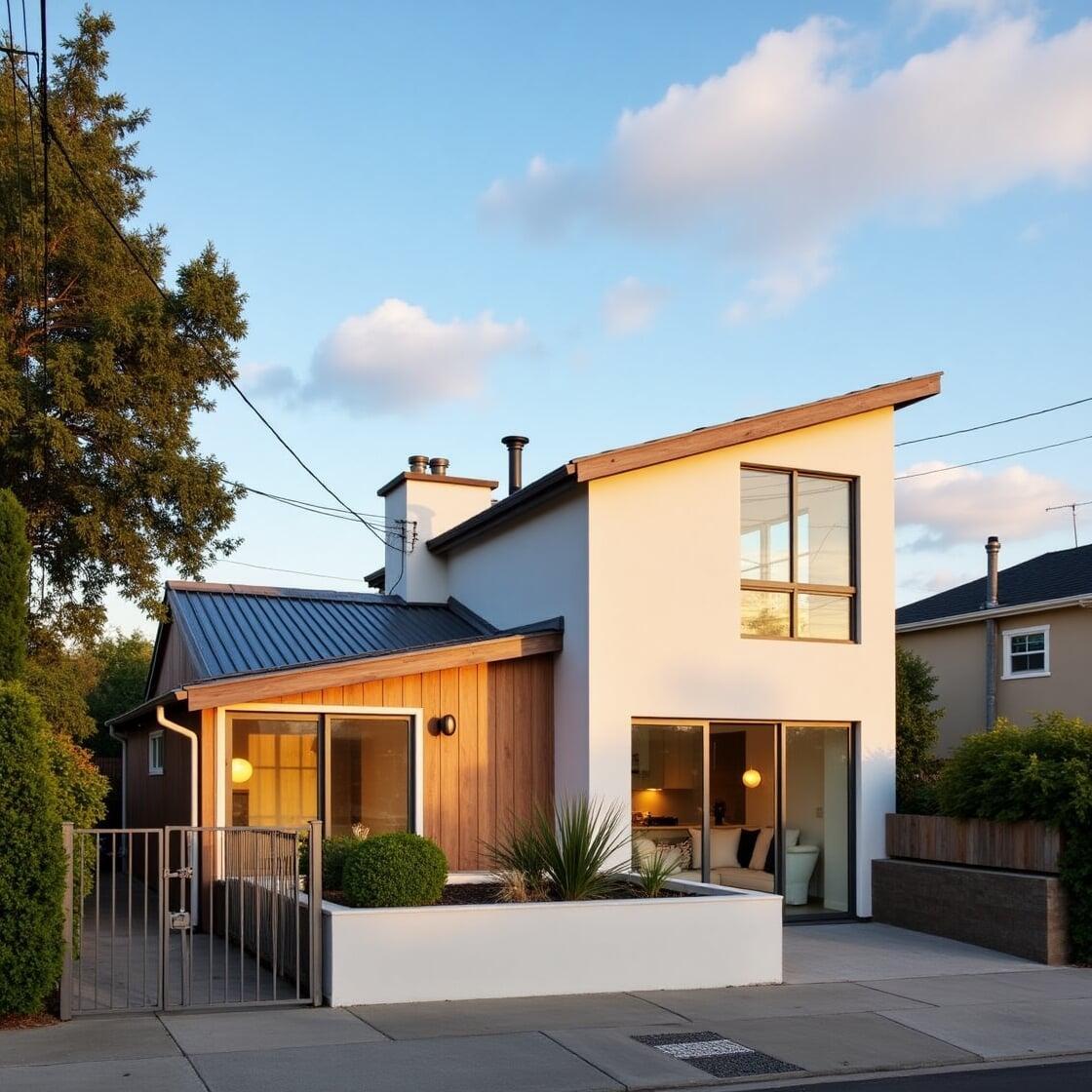| Table of Content |
| 1. What is an ADU? |
2. Benefits of Building a Permitted ADU in California |
| 3. ADUs and Historic Properties in California |
| 4. ADUs in HOA Communities: What’s Allowed? |
4.1 California ADU Laws for HOAs |
4.2 Common HOA Restrictions May Include |
| 5. Steps to Secure an ADU Permit in a Historic District or HOA |
| 6. Best Practices for Homeowners |
| 7. FAQ |
Accessory Dwelling Units (ADUs) are rapidly reshaping California’s housing market, offering homeowners a way to add value, flexibility, and income to their properties. But if your home is part of a Historic Preservation District or regulated by a Homeowners Association (HOA), building an ADU may involve extra steps and stricter oversight.
In this comprehensive guide, we’ll explore the permitting process for ADUs on historic properties or within HOA-governed communities in California, including updated state laws, legal protections, and compliance strategies.

✅ Benefits of Building a Permitted ADU
Getting a permitted ADU offers several long-term advantages, especially on regulated properties:
✔️ Boost property value with legal, habitable square footage
✔️ Generate rental income legally and safely
✔️ Comply with local and state laws, avoiding fines or litigation
✔️ Add multigenerational or caregiver housing
✔️ Increase housing supply while retaining historic charm
🕰️ ADUs and Historic Properties in California
Historic homes and districts are protected for their architectural, cultural, or historic value. This doesn’t mean ADUs are banned—but they may face design, size, or location restrictions.
What You Should Know:
🏛️ Historic Preservation Commissions (HPCs) may require approval before you make exterior changes.
🧱 You may need to use matching materials and styles (e.g., wood siding, roof lines).
🗂️ Design review and CEQA (California Environmental Quality Act) considerations could apply for major modifications.
🔁 Detached ADUs at the rear of the property are usually preferred to maintain front-facing aesthetics.
📜 Good News: California state law requires cities to allow ADUs in historic districts, but allows them to regulate design for preservation compatibility.
🏘️ ADUs in HOA Communities: What’s Allowed?
Homeowners Associations (HOAs) traditionally enforce strict community standards. However, California law limits their ability to block ADUs.
California ADU Laws for HOAs:
SB 13 and AB 670 (2019): Prohibit HOAs from outright banning ADUs on single-family lots.
HOAs can regulate, but not prevent, the construction of ADUs.
Rules must be reasonable and not overly burdensome.
You must still follow HOA processes, including submitting plans for review.
Common HOA Restrictions May Include:
Aesthetic requirements (matching paint, roof type)
Placement of detached units behind the primary home
Landscaping or fencing requirements
Limitations on short-term rentals (e.g., Airbnb)
📌 Tip: Review your HOA CC&Rs (Covenants, Conditions & Restrictions) before planning your ADU. Work collaboratively with your board to avoid conflicts.
📋 Steps to Secure an ADU Permit in a Historic District or HOA
1. Review Local and HOA Regulations
Check with your city’s Planning or Historic Preservation Office
Request and review your HOA’s CC&Rs and architectural guidelines
2. Hire a Design Professional Familiar with Historic/HOA Rules
Choose an architect or designer with experience in preservation-sensitive design
Have them prepare renderings and compliance reports as needed
3. Submit to All Required Entities
Submit plans to both the city’s planning/building department and your HOA’s architectural review committee (if applicable)
Be prepared for multiple rounds of feedback or revisions
4. Schedule Site Inspections & Obtain Permits
Ensure that inspections comply with building code and historical preservation standards
Get your Certificate of Occupancy upon completion
🧠 Best Practices for Homeowners
🧾 Document all approvals from the HOA and the city
📷 Take before/after photos for resale or future verification
📣 Communicate early and often with your HOA and neighbors to reduce friction
⚖️ Consult a legal advisor if you believe your HOA is overstepping state laws

